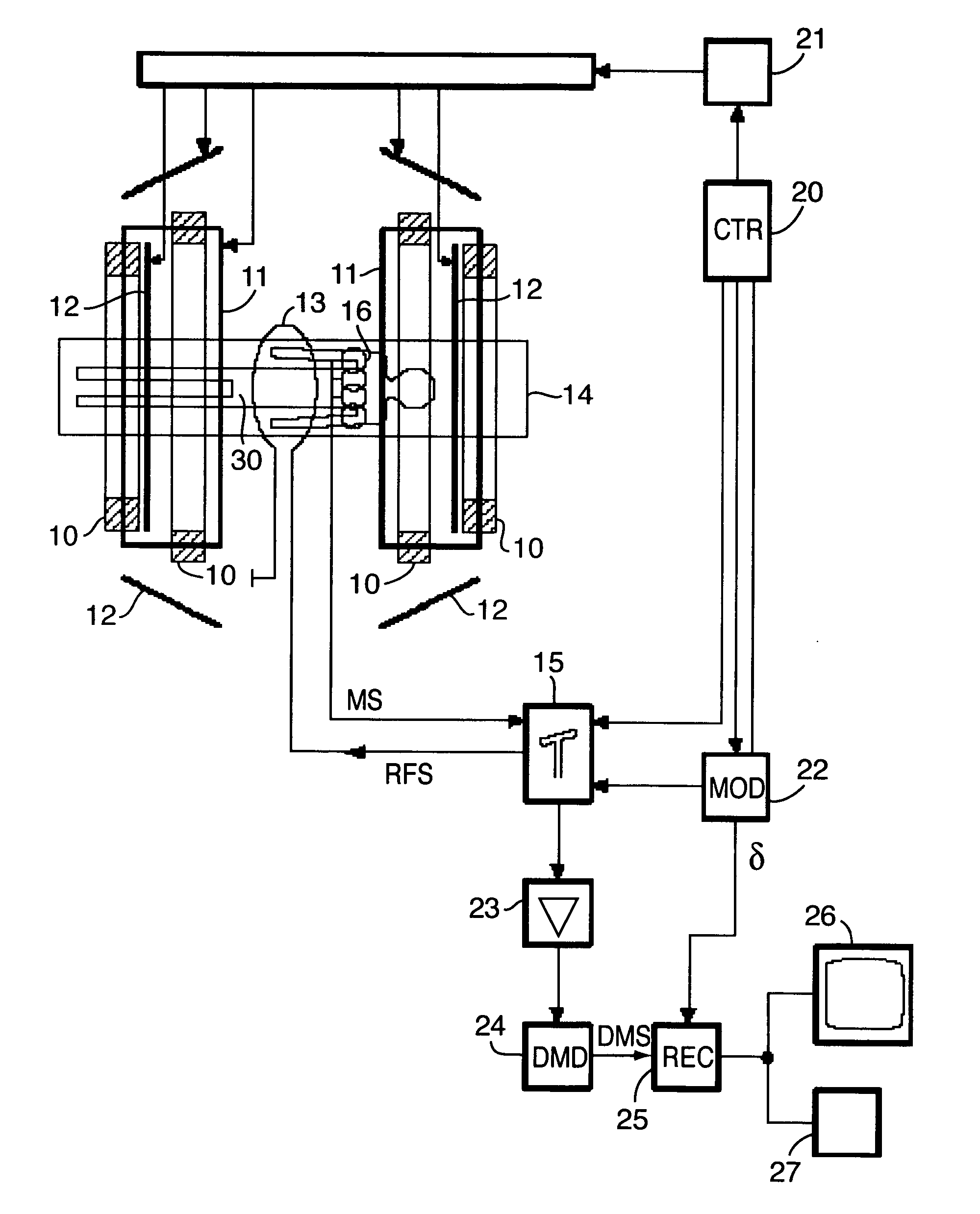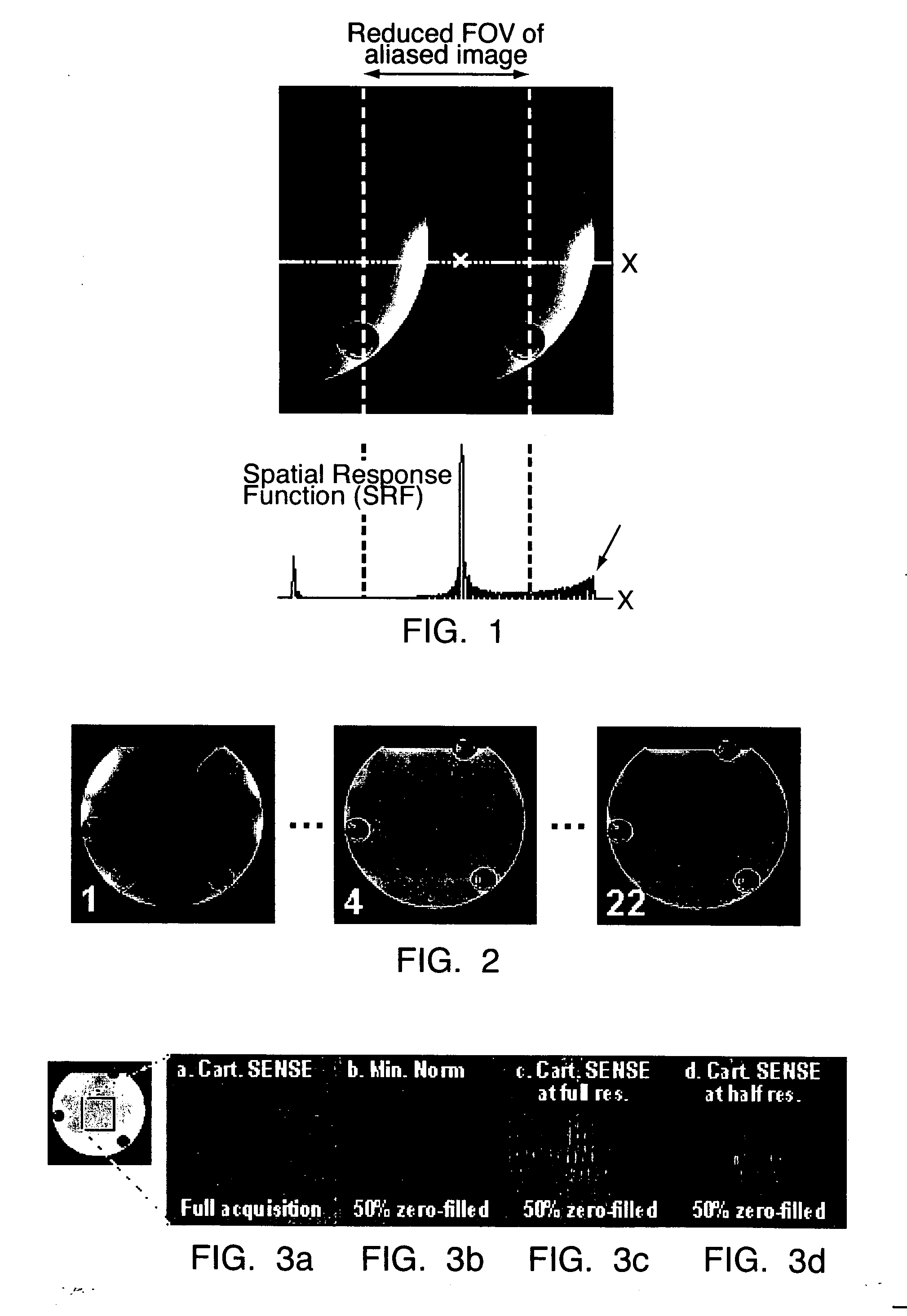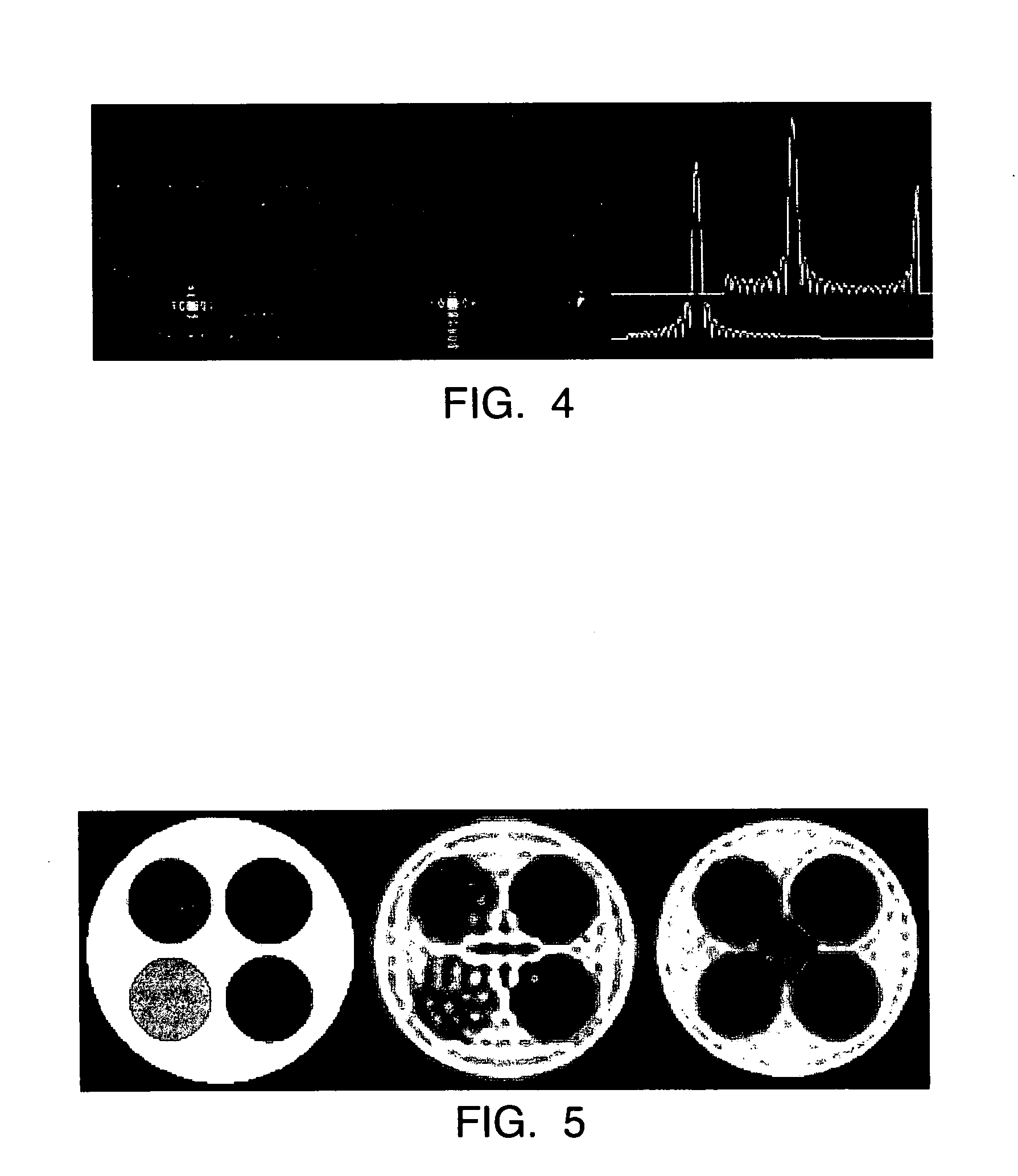Minimum norm sence reconstruction for optimal spatial response
- Summary
- Abstract
- Description
- Claims
- Application Information
AI Technical Summary
Benefits of technology
Problems solved by technology
Method used
Image
Examples
Embodiment Construction
OF THE INVENTION
[0084] Images (256×256, 220 mm FOV, 3 mm thickness) were acquired from a phantom in a Philips Intera 1.5T scanner (Philips Medical Systems B.V., Best, Netherlands) using a gradient echo sequence and five surface coils placed around the phantom. Reconstruction was performed iteratively using the conjugate gradient algorithm (see FIG. 2), due to its efficiency and its ability to handle non-Cartesian sampling as well. Equation [3] is generally ill-conditioned, due to non-orthogonality of the encoding functions. In the present method the ill-conditioning has been overcome with Tikhonov regularization, i.e. by choosing θ as an identity matrix.
[0085] When the full k-space has been acquired, aliasing is eliminated by Cartesian SENSE reconstruction (see FIG. 3a). However, aliasing artifacts remain noticeable, if k-space is 50% zero-filled (see FIG. 3c). The artifacts are not eliminated by applying Cartesian SENSE at a lower resolution without zero-filling first (see FIG. 3d...
PUM
 Login to View More
Login to View More Abstract
Description
Claims
Application Information
 Login to View More
Login to View More - R&D
- Intellectual Property
- Life Sciences
- Materials
- Tech Scout
- Unparalleled Data Quality
- Higher Quality Content
- 60% Fewer Hallucinations
Browse by: Latest US Patents, China's latest patents, Technical Efficacy Thesaurus, Application Domain, Technology Topic, Popular Technical Reports.
© 2025 PatSnap. All rights reserved.Legal|Privacy policy|Modern Slavery Act Transparency Statement|Sitemap|About US| Contact US: help@patsnap.com



